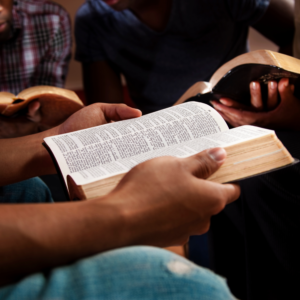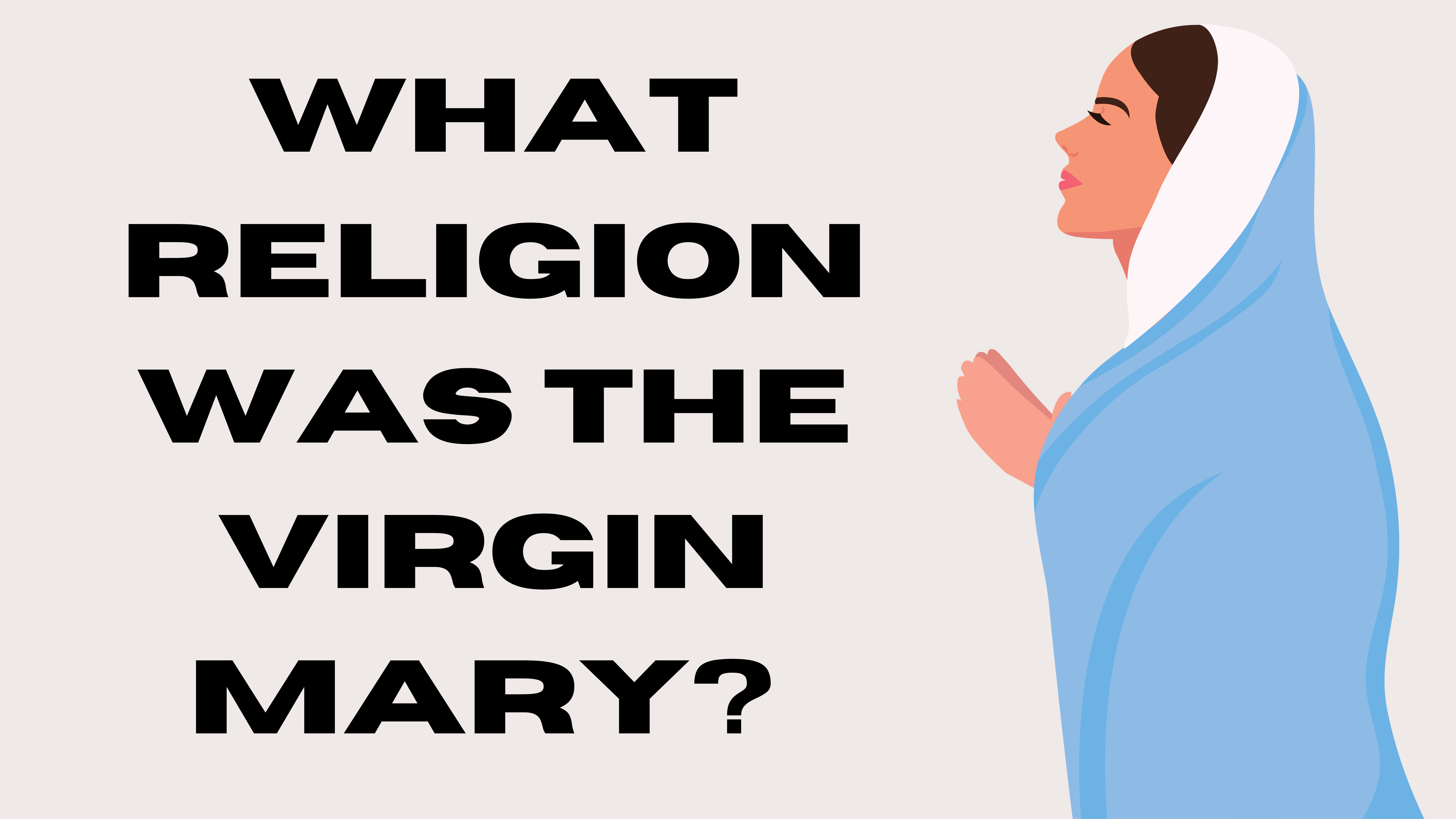What Religion Was the Virgin Mary? Exploring the Religious Identity of Mary in Biblical Context
The Virgin Mary holds a central role in Christianity, especially in Catholicism, where she is revered as the Mother of God and the Queen of Heaven. Her significance extends far beyond the biblical narratives, as Mary has become a symbol of purity, grace, and devotion. However, the question remains: What religion was the Virgin Mary? This question requires exploring the historical and cultural context in which Mary lived, as well as understanding the religious traditions and practices of her time.
In this comprehensive article, we will examine the religious identity of the Virgin Mary, her life as a Jewish woman in first-century Palestine, and how her role in Christianity emerged. We will also explore how Mary’s faith and devotion to God align with Jewish traditions, as well as how she became a figure of veneration in Christian theology. This in-depth exploration will shed light on Mary’s religious background, her place in biblical history, and the evolution of her significance in Christian faith and practice.
The Historical and Cultural Context of Mary’s Life
To answer the question of what religion the Virgin Mary practiced, we must first understand the time and place in which she lived. Mary was born in Nazareth, a small town in first-century Judea, during the reign of King Herod the Great. Judea, at this time, was a province of the Roman Empire, and its inhabitants were predominantly Jewish.
The Jewish people of the time followed the religious traditions outlined in the Torah, which consisted of the first five books of the Hebrew Bible (the Old Testament in Christian Bibles). These texts, along with other scriptures such as the Prophets (Nevi’im) and the Writings (Ketuvim), made up the Hebrew Bible, which served as the foundation of Jewish faith and practice. Therefore, Mary, as a Jewish woman, would have been deeply influenced by the teachings and customs of her people.
Mary’s Jewish Heritage
Mary’s religious identity was shaped by the Judaism of her time. As a descendant of the House of David, Mary’s family was part of a long line of Jewish tradition that awaited the arrival of the Messiah (the Anointed One) promised by the Hebrew scriptures. Mary’s life and actions are firmly embedded within this Jewish context.
In the Gospel of Luke (1:26-38), we are introduced to Mary as a young woman who is engaged to Joseph, a carpenter from the tribe of Judah. The angel Gabriel’s message to Mary, announcing that she would conceive the Messiah by the Holy Spirit, aligns with Jewish messianic expectations. At that time, Jews were awaiting a Savior who would restore Israel and bring peace. Therefore, Mary’s story takes place against the backdrop of Jewish eschatological hopes for the coming of the Kingdom of God.
Religious Practices in First-Century Judaism
In first-century Judea, Jewish religion and customs were primarily centered around the Temple in Jerusalem, where sacrifices and rituals were performed according to the laws outlined in the Torah. Synagogues also played an important role in local Jewish communities, where the Scriptures were read, prayers were said, and worship took place. The Sabbath (Shabbat), celebrated on the seventh day of the week, was a day of rest and religious observance.
Jewish women, like Mary, would have followed the Torah’s teachings on purity, marriage, and family life. They participated in religious festivals such as Passover, Shavuot, and Sukkot, and would have made pilgrimages to Jerusalem for key religious holidays.
Mary’s participation in these Jewish practices is evident in the Gospels. For example, in Luke 2:22-24, Mary and Joseph take Jesus to the Temple in Jerusalem to present Him to the Lord, following the law of Moses. This event reflects Mary’s adherence to Jewish customs and her role as a devout Jewish woman.
Mary’s Role in Christianity

While the Virgin Mary’s religious identity was Jewish, her role in Christianity transcended her original context. Over time, the Christian Church would come to regard Mary as an essential figure in Christian theology, one of unparalleled significance, especially in Catholicism and Eastern Orthodoxy. But how did a Jewish woman from Nazareth become so central to the Christian faith?
Mary in the New Testament
Mary’s role in Christianity is defined by the birth and early life of Jesus Christ. According to Christian belief, Mary was chosen by God to bear the Son of God, the Messiah promised in Jewish scripture. The Annunciation—the angel Gabriel’s announcement that Mary would conceive a child by the Holy Spirit—is considered a pivotal moment in Christian history. It marks the beginning of the incarnation of Jesus, the belief that God became flesh in the person of Jesus Christ.
The Gospels of Matthew and Luke provide us with the most detailed accounts of Mary’s life and her relationship with Jesus. In Luke 1:26-38, Mary responds to the angel’s message with faith, saying, “I am the Lord’s servant. May your word to me be fulfilled.” This humble acceptance of God’s plan is one of the key elements of Mary’s religious identity in Christianity. Her willingness to submit to God’s will has been revered by Christians as an example of perfect obedience and faith.
In addition to the Annunciation, Mary appears throughout the Gospels in connection with Jesus’ life and ministry. She is present at the Nativity, at the Wedding at Cana (where Jesus performs His first miracle by turning water into wine), and at the Crucifixion, where she stands at the foot of the cross (John 19:25-27).
The Virgin Birth and Christian Theology
The doctrine of the Virgin Birth is a fundamental element of Mary’s role in Christianity. Christians believe that Mary conceived Jesus through the Holy Spirit, without the involvement of a human father. This miraculous conception affirms the belief in Jesus’ divinity and His role as the Savior of the world. The virgin birth also connects Mary to the prophecy in Isaiah 7:14, which speaks of a virgin bearing a child who will be called Emmanuel, meaning “God with us.”
In Christian doctrine, the Virgin Birth is seen as a sign of Jesus’ unique nature—fully God and fully man. Mary’s purity and virginity are emphasized as part of the sanctity of her role as the Mother of God. This idea is particularly emphasized in Catholic and Eastern Orthodox traditions, where Mary is called the Theotokos (Greek for “God-bearer”).
Mary’s Perpetual Virginity
The belief in Mary’s perpetual virginity is held by many Christian denominations, particularly in Catholicism and Eastern Orthodoxy. This doctrine asserts that Mary remained a virgin throughout her life, even after the birth of Jesus. While the New Testament mentions that Mary had other children (Matthew 13:55-56), this belief holds that these siblings were either Jesus’ cousins or children of Joseph from a previous marriage.
The perpetual virginity of Mary underscores her holiness and devotion to God. It also aligns with her symbolic role as a new Ark of the Covenant, carrying the presence of God in a pure and sacred vessel. This belief became a central tenet of Mary’s veneration in the early Church.
Mary’s Role in Christian Prayer and Devotion
In Catholicism, Mary is often invoked as an intercessor, someone who can pray on behalf of Christians. The Catholic Church teaches that Mary, as the Mother of Jesus, has a unique role in salvation history. She is regarded as a mediator who can intercede with God for the needs of humanity. This belief is rooted in her role at the Wedding at Cana, where she intercedes with Jesus to perform a miracle (John 2:1-11).
The Rosary, a Catholic prayer devotional, is perhaps one of the most well-known forms of Marian devotion. The Rosary consists of prayers to Mary and meditations on key events in her life, as well as the life of Jesus Christ. Catholics also celebrate various feast days in honor of Mary, such as the Feast of the Assumption (August 15), which commemorates Mary’s bodily assumption into heaven.
The Evolution of Mary’s Veneration in Christianity
The Virgin Mary’s significance has evolved over centuries, with varying degrees of veneration depending on the denomination and cultural context. The Catholic Church, in particular, has elevated Mary to a status of special reverence, but her role also extends beyond Catholicism into Eastern Orthodoxy, Protestantism, and Islam.
Mary in Catholicism
In Catholicism, Mary is not only a model of faith but also a spiritual mother to all Christians. The Catholic Church holds several dogmas related to Mary, including:
- The Immaculate Conception: The belief that Mary was conceived without original sin to be a pure vessel for the birth of Jesus.
- The Assumption: The belief that Mary was taken up into heaven body and soul at the end of her earthly life.
- Mary’s Role as Mediator: Catholics believe that Mary’s intercession is powerful because of her unique relationship with Jesus.
These doctrines emphasize Mary’s holiness and divine favor, and they highlight the central role she plays in Catholic worship and devotion.
Mary in Eastern Orthodoxy
Eastern Orthodoxy shares many of the same beliefs about Mary as Catholicism, such as her Theotokos status and her perpetual virginity. However, the Orthodox Church places more emphasis on the mystical and spiritual aspects of Mary’s role. She is viewed as a symbol of the Church itself—pure, holy, and dedicated to God’s will.
In Orthodox Christianity, Mary is also deeply honored in iconography and liturgy. The feasts dedicated to Mary, such as the Dormition of the Theotokos, celebrate her death and assumption into heaven. Mary is venerated as a protector and advocate for humanity.
Mary in Protestantism and Islam
Protestants tend to emphasize sola scriptura (Scripture alone) and thus have less emphasis on the veneration of Mary compared to Catholics and Orthodox Christians. However, many Protestants still recognize Mary’s role as the mother of Jesus and hold her in high regard for her faith and obedience to God.
In Islam, Mary (known as Maryam) is also deeply revered. She is considered one of the most righteous women to have ever lived and is the mother of the prophet Isa (Jesus). In the Quran, Mary is honored as a symbol of purity, chastity, and faithfulness to God.
Conclusion: Mary’s Religion and Legacy
The Virgin Mary, as a figure of immense significance in both Judaism and Christianity, serves as a bridge between the Old and New Testaments. Her religion was undoubtedly Jewish, as she followed the faith of her ancestors. However, her role as the mother of Jesus Christ has made her an enduring figure in the Christian faith, where she is revered not only for her maternal role but also for her obedience, humility, and spiritual purity.
While Mary’s religious identity was rooted in the Jewish tradition of first-century Palestine, her legacy has become universal, extending beyond religious boundaries and inspiring millions of people around the world. Whether in Catholicism, Eastern Orthodoxy, Protestantism, or Islam, Mary remains a symbol of faith, devotion, and the potential for human collaboration with the divine. Her significance transcends the historical context of her life, continuing to inspire and guide the faithful today.
